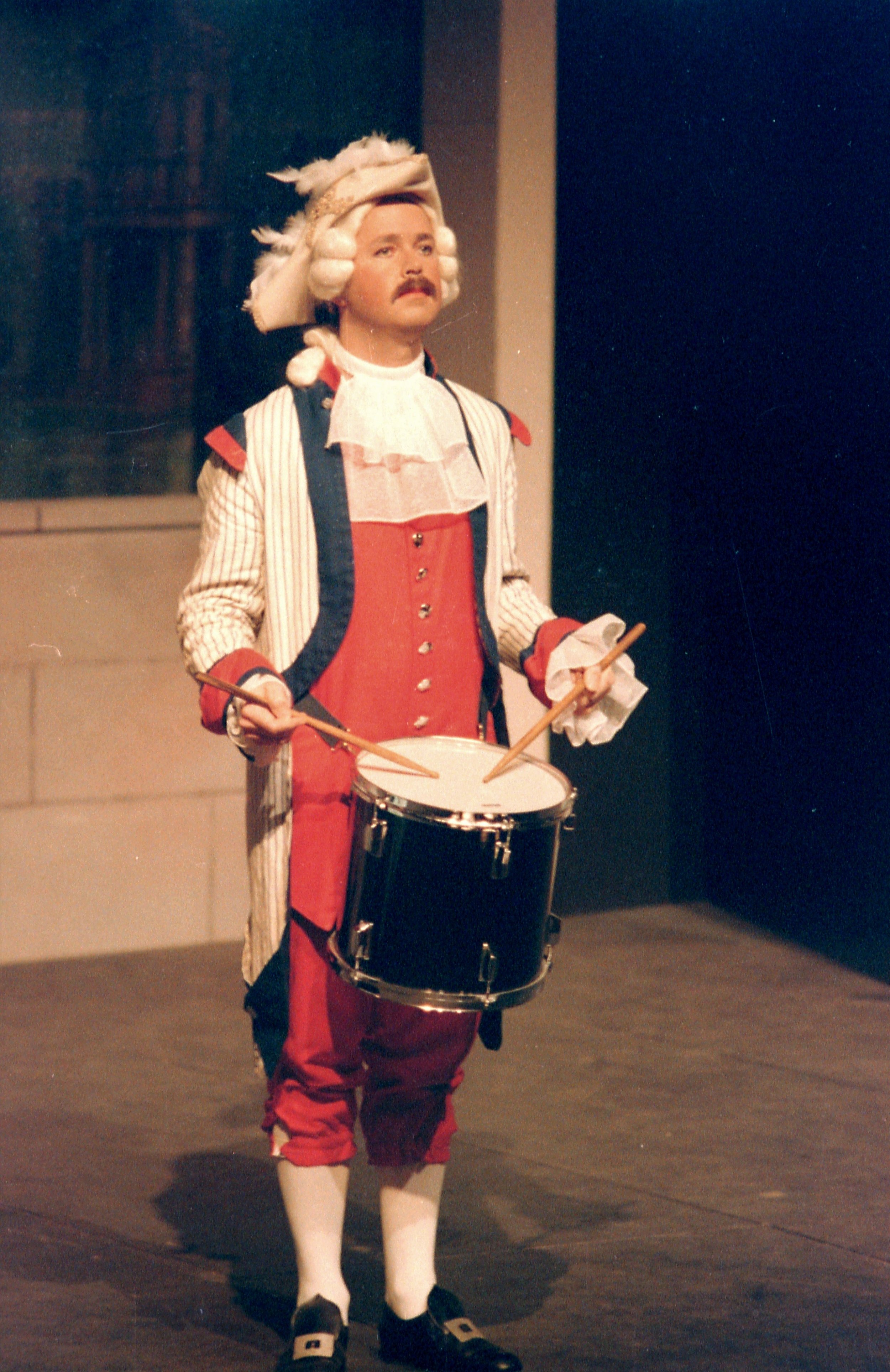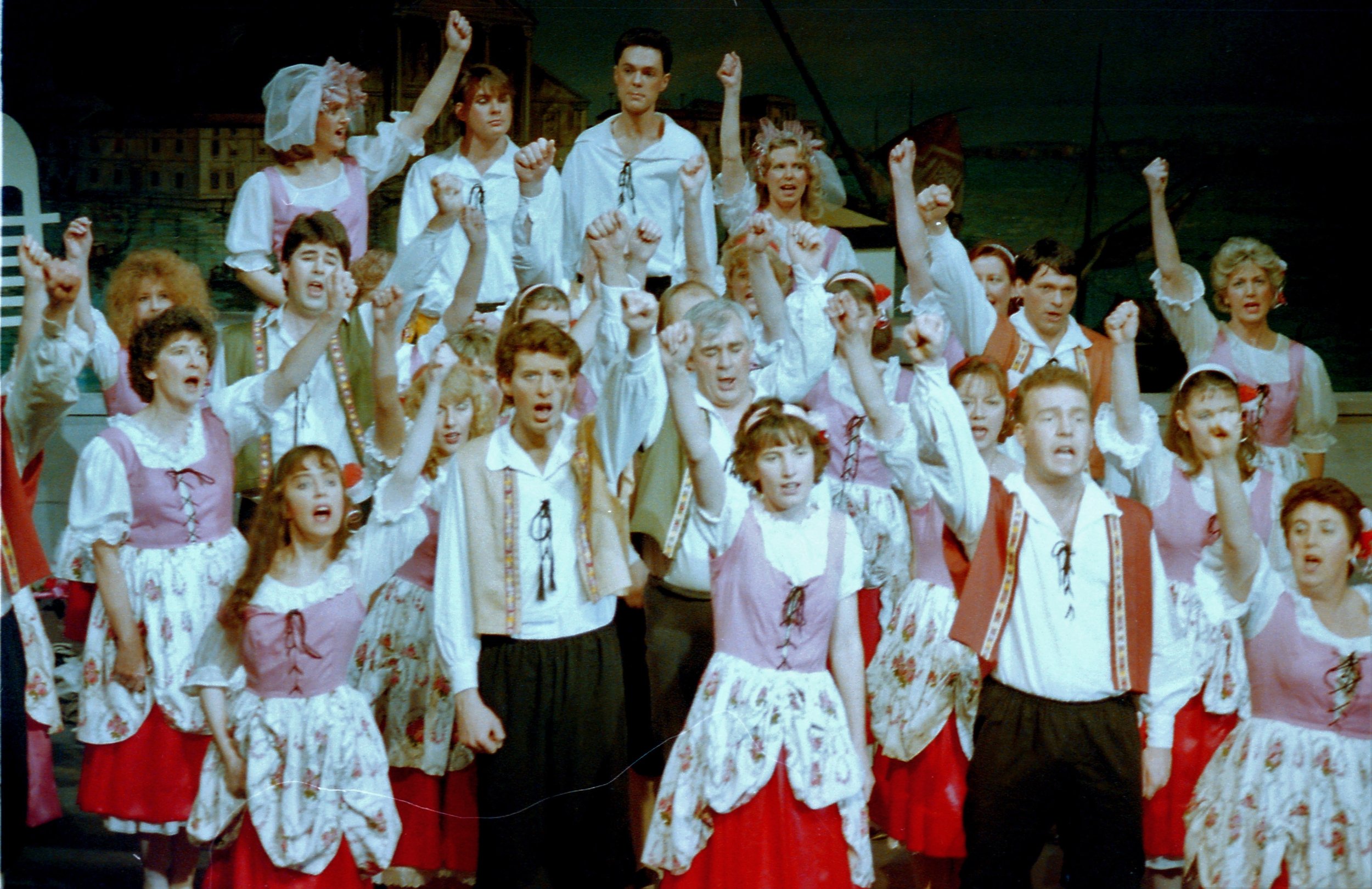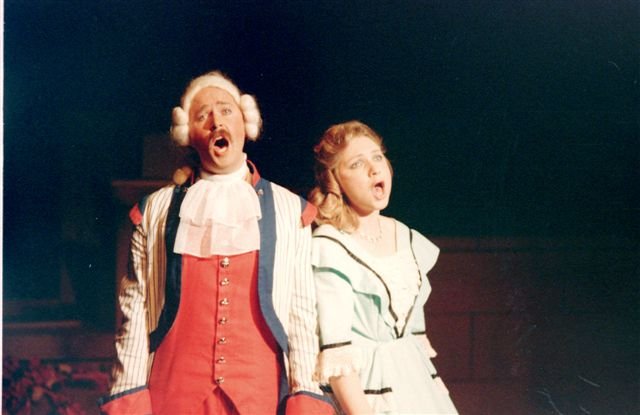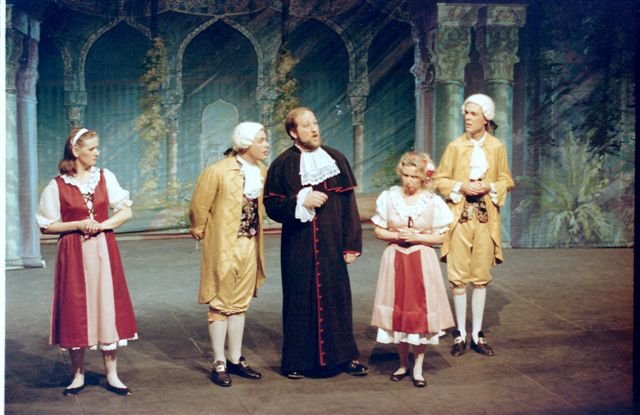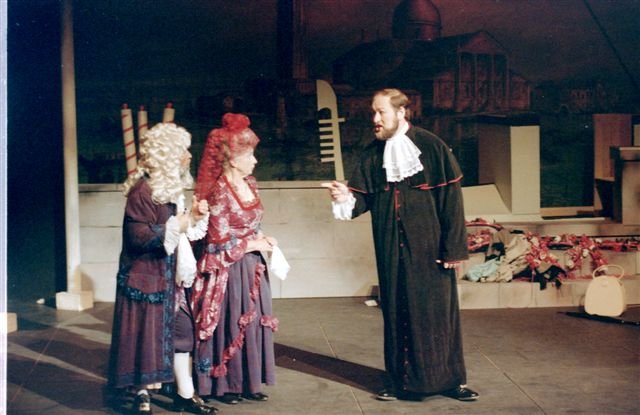1991, The Gondoliers
The Gondoliers - rehearsals
In mid-May rehearsals for The Gondoliers began, under the co-directorship of Ruth Richter and Graham Ford, with Dianne Richter as Producer, Rena Douglas as her assistant and Jeanette Donehue as Choreographer.
Auditions were held late in May, and it was encouraging to see a large number of auditionees from outside the company although a large number of "old hands" won major roles. The key players were Mavis Ford (Gianetta), Judith O'Shea (Tessa), Beryl Nicholls (Duchess of Plaza Toro), John Tacey (Marco), Jo Bourke (Guiseppe), Rod Gorfine (Don Allambra del Bolero) and Michael Knuckey (Duke of Plaza Toro). Newcomers Ingrid Schipperheyn, Ellen Hundley and Michael Try filled the roles of Casilda, Fiametta and Luiz respectively. Other roles went to Hildegard Ziersch, Kay Driver, Marilyn Billing, Allan Luke, Victor Jetten and James Douglas.
Meanwhile, rehearsals for The Gondoliers were well under way, with some novel ideas coming from the co-directors. One was to have the curtain open during the overture to reveal the amorous adventures of Marco and Guiseppe, systematically "working" through their lists of girls. With the theme for the show being "Lust and Passion", this was an appropriate beginning. The refinement of the Ducal party was to be contrasted with the earthy nature of the "plebs". Gianetta's capture of Marco was to be achieved with the aid of a strong hip and shoulder to Tessa. The two wives would be carried in on stretchers in Act 2, throwing up into buckets after their sea journey. Otherwise why wouldn't they be the first of the party to arrive on stage? Realism rather than romanticism seemed to be the emphasis.
This year's production was to be in October, so there was a greater lead time for "polishing" the show. Proceeds this time went to Community Aid Abroad and Harrison Youth Services.
The Gondoliers - performances
Show Program
Les Bardwell was working hard on the sets and had produced a gondola that moved on pulleys. This was a very ambitious project, and worked well after some mishaps, such as the wheels falling off in the charity performance, and a crash into the sea wall on opening night as well as rather erratic progress across the stage. Ian managed to get the orchestra to speed up or slow down in time with the gondola, a noteworthy achievement.
Les has been another quiet backstage achiever for Diamond Valley Singers. Stepping into the breech when Chris White had to drop out of Ruddigore, his involvement gradually increased over the years until he assumed full responsibility for design and construction. Over the years Les has spent hundreds, if not thousands of hours creating very impressive sets.
One innovation during Gondoliers, which became a feature of later productions, was the introduction of children on stage, Ruth's two sons, Daniel and Christopher and Dianne's eldest son, Lucas, became pages at the Court of Barataria. They very much enjoyed their first taste of theatre work and have been back for more ever since.
Ruth and Graham had added some topical touches to the dialogue, which brought a few laughs and which was in keeping with the spirit of Gilbert and Sullivan, which depends heavily on political and social satire. On the last night a few little extra touches crept in, such as Rachel, one of the youngest and shiest chorus members, managing to kiss half a dozen boys while they were asleep in Act 2. Rod, playing a very lecherous Grand Inquisitor with a penchant for bottom pinching, has his own very soundly pinched by Judith and Mavis in the curtain calls!
Audiences were very appreciative and expressed that the orchestra this year really excelled itself.
The show was one of the best yet, and the members of the company worked very happily together. A measure of this togetherness was the fact that the principals who had come in from outside all expressed a desire to stay with the company. Unfortunately Ruth said that she would not be available to direct next year, as she was hoping to start a new dramatic venture in her own area - Northcote.
These history notes have been kindly provided by our long-term artistic director and co-founder, Graham Ford.



